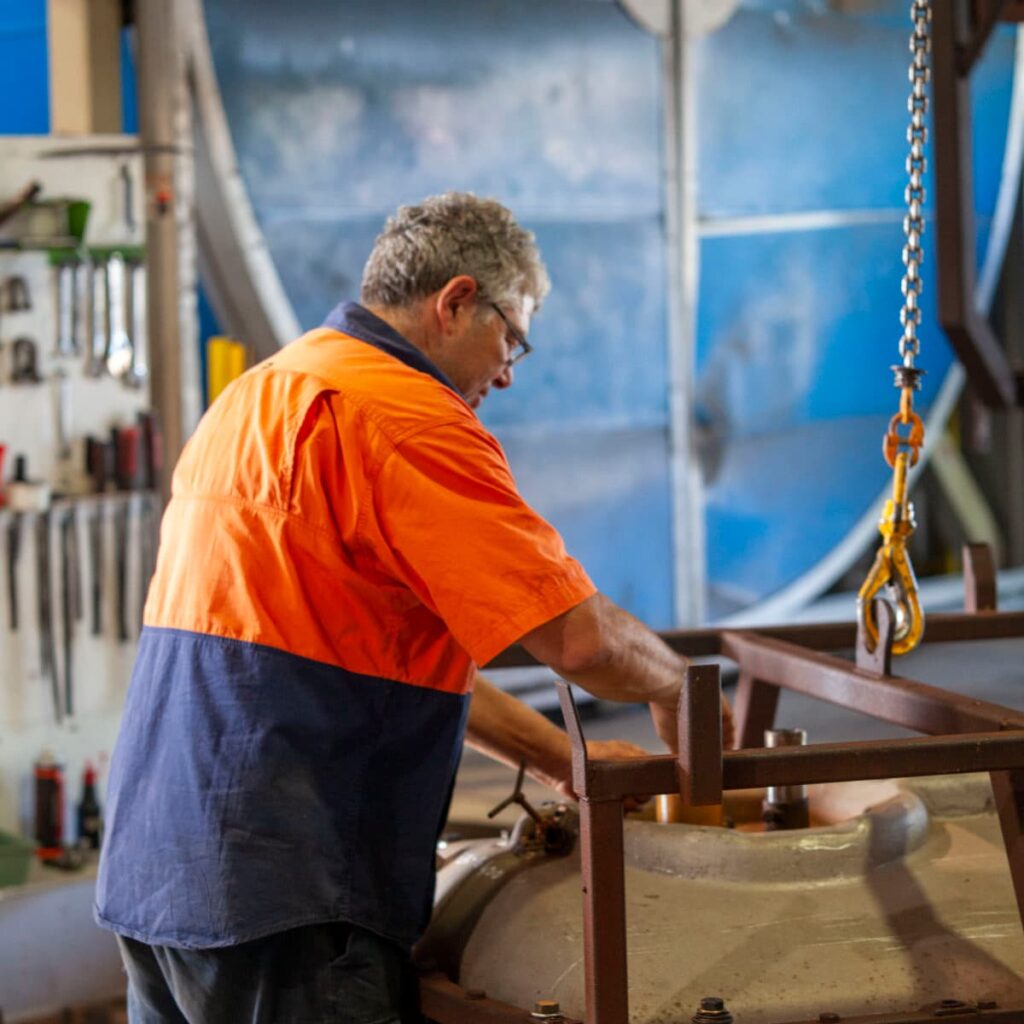How Global Helps Customers Fertigate Efficiently on the Farm
Home / How Global Helps Customers Fertigate Efficiently on the Farm
- globaltanks
- January 17, 2021
- 4 minutes
Are you looking to achieve more with less on your farm? A fertigation system may be something that can help massively improve crop productivity and significantly lower the chemicals you need to achieve those results.
Fertigation is the combination of irrigation and fertilisation, but it’s capabilities are much more beneficial than just multitasking. Fertigation allows farmers to increase nitrogen efficiency and in turn, apply less fertiliser while getting better growth results.
Global Rotomoulding has been called to assist in several fertigation systems with our custom Polyethylene parts and tanks that are cheaper to produce than metal or rubber parts and unreactive to the chemicals you will be using.
Fertigation – The Basics
Fertigation supplies crops with dissolved fertiliser through an irrigation system. It takes a fair amount of research and preparation. Still, this technique allows farmers to customise and alter nutrient and water levels to obtain the crop’s maximum production yield.
Broadcasting fertiliser onto the surface comes with many variables. Things like rainfall or heat can influence how much of the fertiliser gets absorbed into the soil. This method leaves a considerable amount of fertiliser on the soil surface that never makes it into the root zone. This means the nutrients are inaccessible for the crop and doesn’t promote growth at all.
Fertigation has proven to be a more effective and consistent application method and takes less time and man-power once a system is installed. But the initial cost, need for a quality irrigation system and labour cost to mix and measure solutions is the main deterrent for farmers.
Broadcasting fertiliser onto the surface is the most common means of application. The Australian Bureau Of Statistics showed that nine Australian Agricultural Environments broadcasted fertiliser, while drilling below the surface was the most common method in eight. Only agricultural businesses in the Arid region category used the fertigation method as the primary fertiliser application.
Regular applications of soluble nutrients is a proven way to dismiss the main issues tied to surface broadcast fertilisation. Fertigation places nutrients around the plant roots and allows for rapid intake. It also saves labour time, application time and lowers field compaction.
To capitalise on these benefits, extra care should be taken when selecting fertilisers and injection equipment as well as in the management and maintenance of the system.
How It Works
A dissolvable fertiliser solution is mixed into a suitable container and combined into an irrigation system.
Popular Irrigation Systems With Fertigation:
- Sprinkler system – Applies solution evenly across plant and soil.
- Drip irrigation – Precisely targets roots and stem area of plants. More efficient for fertilisation, but does not provide water to leaves. Can be subsurface or above ground.
- Surface Irrigation – Most popular irrigation system used by farmers worldwide. Less even distribution of nutrients compared to the other two.
Once an irrigation system is found, the fertiliser is applied by different methods.
The following are generally used:
- Continuous application – Fertiliser is applied at a constant rate from beginning to end.
- Three-stage – Irrigation without fertiliser starts. The fertiliser is injected once the ground is wet. Irrigation process ends without fertiliser solution.
- Proportional – Injection rate is proportional to water discharge (1ltr of solution per 1000ltrs).
- Quantitative – Solution is calculated depending on the size and demand of each irrigation block. (20ltrs to Block-A, 50ltrs to Block-B)
What You Need To Know
Fertigation is a great farm practice that will ensure plants optimal crop nutrition and boost the crop yield while minimising environmental pollution. But you must understand the requirements of your crop and land before taking on the project.
Make sure you:
- Find the right soluble fertiliser mixture.
- Have the right irrigation pH level.
- Think of an effective fertigation schedule.
- Understand the benefits and risks of fertigation.
Consult the experts for the right equipment.
Global Can Help
Fertigation receives a great deal of interest because of the potential to save water and nutrients, while at the same time increasing agricultural productivity. Global has partnered with plenty of farmers and Agri experts in their efforts to conduct efficient fertigation.
Your system will need a range of chemical supply tanks and pressure differential tanks to inject your fertiliser solution into your irrigation systems. According to the NSW Department of Primary Industries, your fertigation system will consist of
- “One or more tanks to dissolve dry fertiliser into water or store pre-made liquid fertiliser mixes.”
- “A means of injecting the dissolved fertiliser into the irrigation line.”
How you choose to inject fertiliser into your irrigation line heavily depends on the variables of your farm. But the tanks can be a simple fix once you figure out how much solution you need.
We have a range of tanks suitable for fertigation mixing and can create custom Polyethylene parts to fit your needs perfectly. Building an irrigation system is different for each farm, so if you need bespoke fittings on your tanks, our expert team can help from design to construction.
Global Rotomoulding is proud to supply Australian farmers with rainwater tanks, fertigation tanks and spray tanks. We work with over 30 OEM’s making critical components to supply the agricultural industry.

